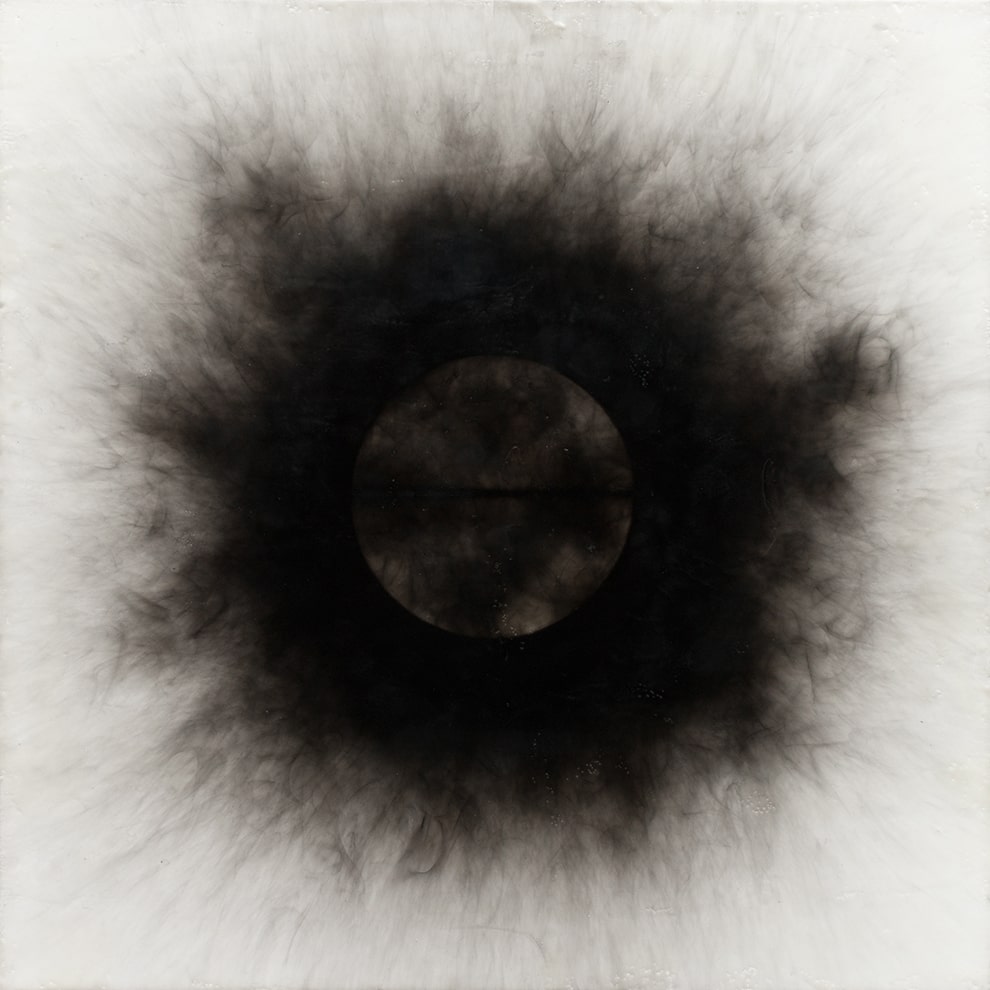
March 9 through April 6, 2024
Opening Reception: Saturday, March 9, 6-9 pm
Bermudez Projects presents as its first show of 2024, Of Flames and Shadows Gone Astray, a group show serving as a multifaceted, cathartic confessional of love, loss, and perseverance.
In what is perhaps the most personal exhibition of the gallerist’s career, Julian Bermudez departs from conventional curatorship, and instead brings together deeply-resonant artworks as a means of addressing the challenges of his own life.
“In the last four years, I have experienced tremendous loss. Loss of love, family, friends, and home. Working through this has been a years-long process, resulting in my need for curating this show in order to fully grieve and heal,” says Bermudez. “This also allows me to push and expand the ways I approach the art of storytelling through curation.”
Through a range of mixed-media work — each incorporating fire as a material — the exhibition touches on our shared experiences of overcoming some of the darkest moments of life; reaffirming our enkindled spirit to thrive in the face of adversity. Impermanence, resilience, loss, and rebirth are explored through each artists’ work, inciting a deeper inspection and introspection of our personal and shared existence. The exhibition aims to leave viewers with a greater appreciation for triumph over tragedy; strength through sorrow; and healing after heartbreak.
Of Flames and Shadows Gone Astray features the works of contemporary artists Francesca Bifulco, Malado Francine, Bryan David Griffith, and Cody Norris.
Bifulco’s striking sculpture, Their Wings Banging and Burning (2023) is a masterful centerpiece to the exhibition. At surprisingly five-feet tall, the burned wood, metal, and found palm cortex stands as a wounded monolith rising from its strewn ring of charcoal crowned at its base.
“I look at this piece as the anatomical dissection of resilience. It’s this vertical body that tolerates the intersections of tough-flexible, external-internal, downward-upward, and below-aboveground,” says Bifulco. “As if you’re witnessing both the wound and the healing at the same time.”
Cody Norris’ painting of twin palm trees breaking through charred earth is a literal and figurative expression of rising again after defeat. Cast in somber hues of grey, violet, and brown, the artwork presents its own scars after having been purposely set on fire by Norris.
What compels Norris to make sense of loss – and what comes of it – by scorching the surfaces of his paintings, extends beyond a fascination with fire. The driving force behind his poignant, atmospheric paintings of endangered landscapes is questioning what gets lost along the way of life.
Bryan David Griffith’s mixed-media works from his Rethinking Fire series explores the issues behind catastrophic wildfires, from past land management practices to climate change. Each piece is created by burning and/or salvaging materials from fire sites. Griffith’s works of smoke accumulated in encaustic beeswax on panel, and petroleum smoke accumulated on paper gleam with a healing, ethereal glow.
Of all the artworks in this show, Malado Francine’s paintings were not initially intended to have a specific association with burning, per se. Although there are some visual elements of “fire” appearing within her painting, Throne, or within the alchemical symbolism of her Lotto Mandalas — their partially charred and missing sections speak to the loss she experienced only a month ago.
Despite the misfortune of that recent blaze in her home and studio, the artist was able to salvage some of her work. As a result, six paintings will be presented in the aftermath of that inferno as an example of the deep resilience we carry as artists and humans, in picking up after disaster, and moving forward with grace.
Of Flames and Shadows Gone Astray does not point to, or illustrate anything specific that has happened in the gallerist’s life. Instead, it uses artworks in lieu of words, like a song or poem to tackle far-encompassing subject matter.
“Each of these artworks speak to universal themes that many of us have faced, or will face, at some point in our life,” concludes Bermudez. “It is truly important that I share my own experiences – however veiled – with audiences in the hopes of turning a painful past into a hopeful future.”
